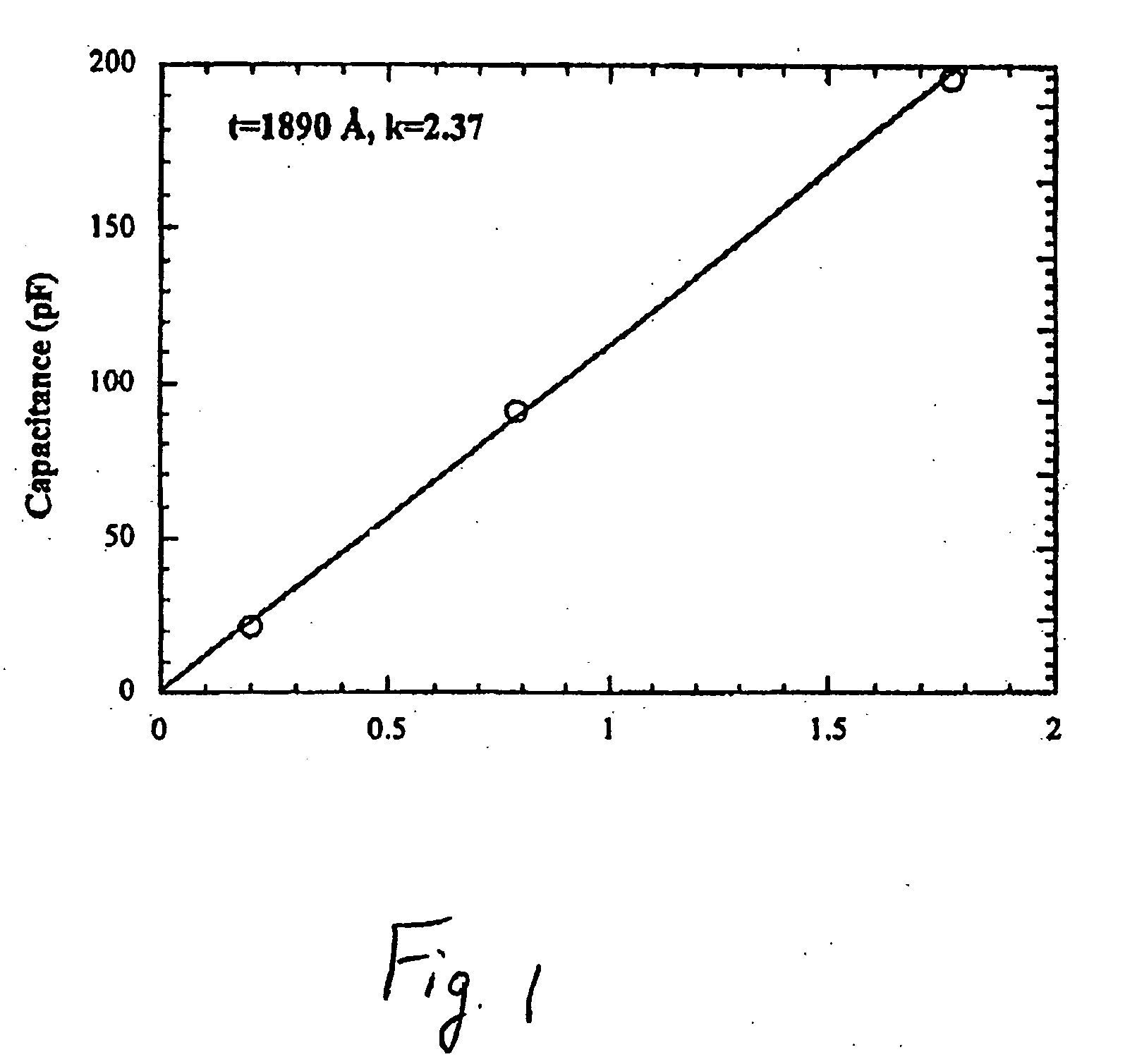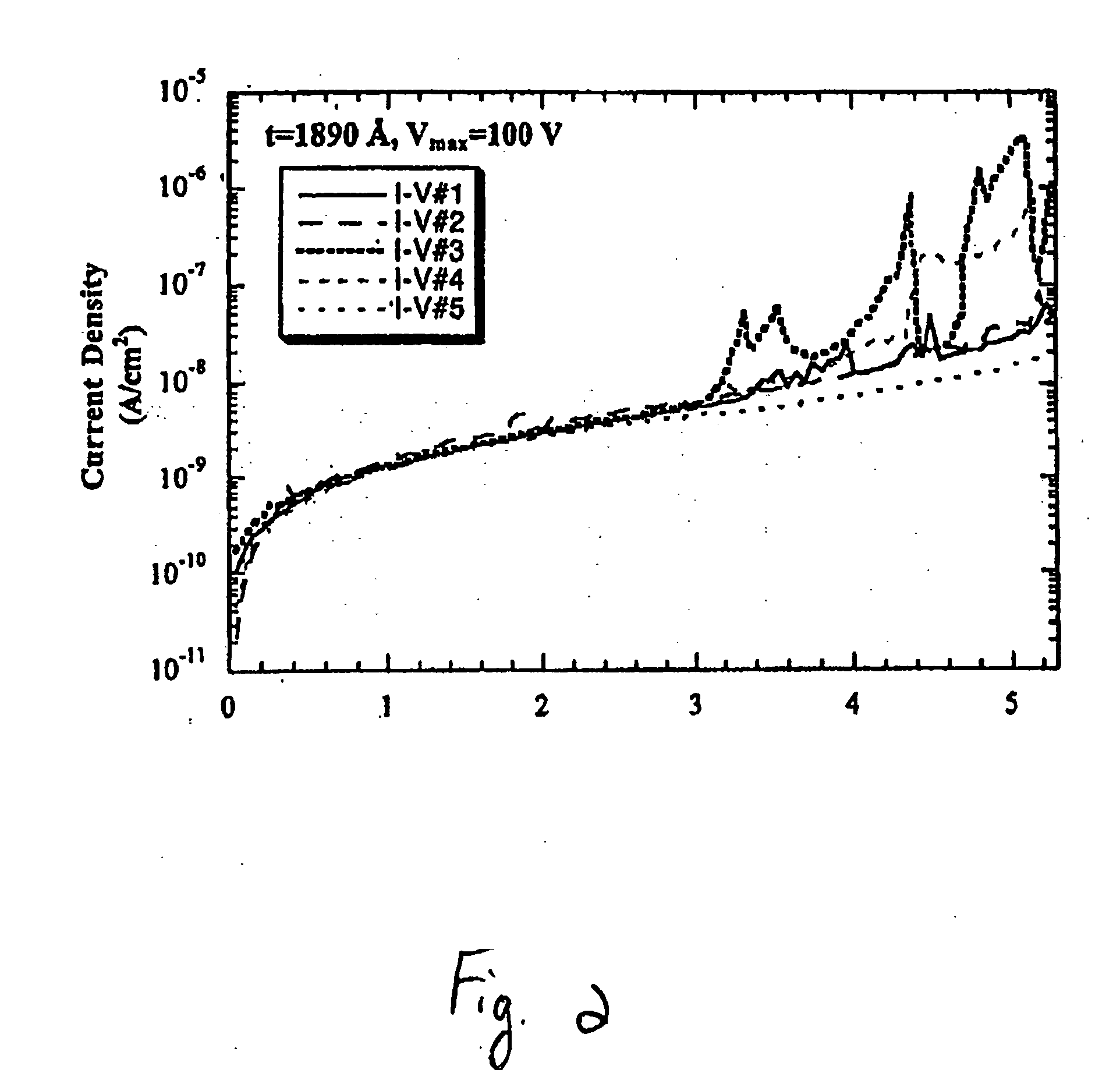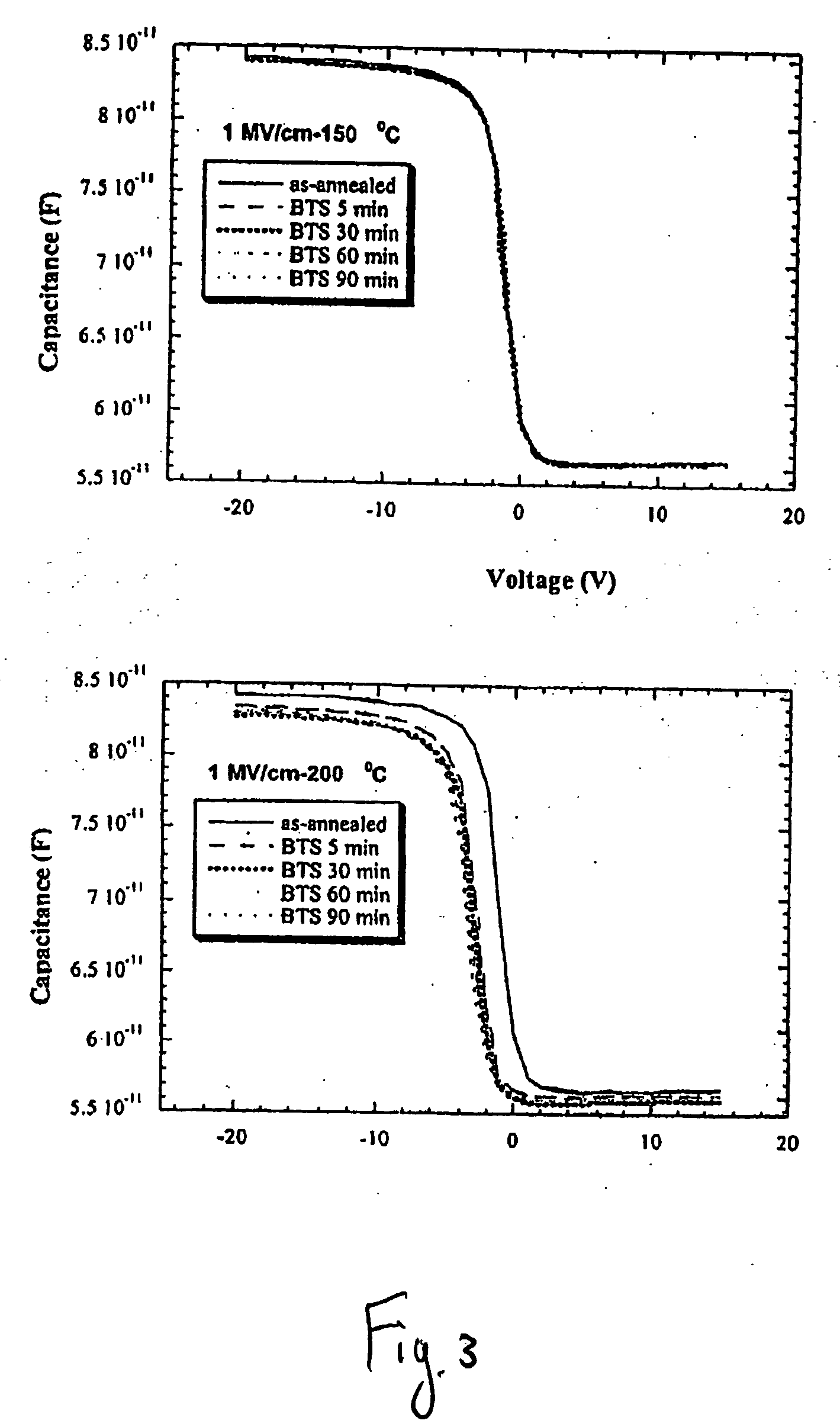Low dielectric constant compositions and methods of use thereof
- Summary
- Abstract
- Description
- Claims
- Application Information
AI Technical Summary
Problems solved by technology
Method used
Image
Examples
example 1
[0056] Preparation of a Cyclolinear Unsaturated Polycarbosilane (PCS).
[0057] In a glove box under an inert N2 atmosphere, 1.0 g of dry monomer (a) and 10 mg of the second generation Grubbs catalyst (1 wt %) were added to a round bottom flask. The mixture was stirred at room temperature in the glove box until a clear solution resulted, which indicated that the catalyst was completely dissolved in the monomer. The flask was then removed from the glove box, and the contents were stirred under vacuum on a Schlenk line and heated in an oil bath to 40° C.
[0058] After one day, the reaction mixture was again taken into the glove box, and an additional aliquot of catalyst was added. The mixture was then stirred at 65° C. until the evolution of ethylene was no longer visible and the stir bar did not stir. The reaction was terminated by exposure to air. The resultant polymer was dissolved in toluene or THF, treated with activated carbon, passed through silica gel column, twice precipitated b...
example 2
[0059] Preparation of a Cyclolinear Saturated Polycarbosilane.
0.2 g (1 mmol) of the unsaturated polymer mixture with 20 ml of xylene was added to a two-necked round bottom flask with a reflux condenser. 0.29 g (2 mmol) of tripropylamine (TPA), and 0.37 g (2 mmol) of p-toluenesulfonhydrazine (TSH) was added to this flask and the mixture was heated at 100° C. in an oil bath for 4 h under nitrogen. The temperature was increased to 110° C. for another 4 h. After removing the solid precipitate, the entire liquid mixture was added to methanol, and the saturated form of the cyclolinear polycarbosilane (CLPCS) was recovered by decantation and dried in vacuum.
example 3
[0060] Film Processing for Electrical Measurement.
[0061] N type, 4-inch silicon wafers with resistivity of ≦0.02 ohm-cm were used as substrates. After RCA cleaning of the wafers, HMDS was spin-coated at 3000 rpm for 40 sec onto the wafers prior to deposition. The cyclolinear carbosilane polymer was dissolved in xylene at a concentration of 15-20%. The solutions were filtered through a 0.2 mm filter and then spin-deposited onto the pretreated wafers at 3000 rpm for 100 sec, followed by drying in an oven at 140° C. for 30 min. The sample was then placed in a tube furnace and flushed with nitrogen gas for approximately half an hour. The furnace temperature was ramped at a rate of 1.0 C / min to 300° C. in a nitrogen atmosphere and held a temperature for 8 hours before cooling to room temperature. The resultant films were used for electrical property measurements. The measurements demonstrated the use of the polymer films as an interlayer dielectric material and a capping layer. From her...
PUM
 Login to View More
Login to View More Abstract
Description
Claims
Application Information
 Login to View More
Login to View More - R&D
- Intellectual Property
- Life Sciences
- Materials
- Tech Scout
- Unparalleled Data Quality
- Higher Quality Content
- 60% Fewer Hallucinations
Browse by: Latest US Patents, China's latest patents, Technical Efficacy Thesaurus, Application Domain, Technology Topic, Popular Technical Reports.
© 2025 PatSnap. All rights reserved.Legal|Privacy policy|Modern Slavery Act Transparency Statement|Sitemap|About US| Contact US: help@patsnap.com



